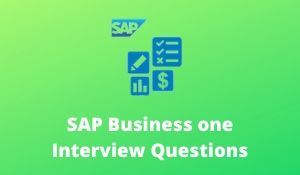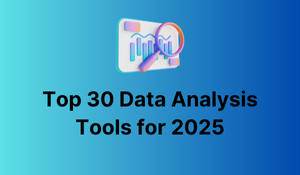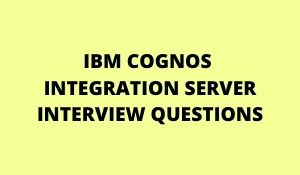
What is SAP B1?
B1 = Business One SAP Business One is an integrated enterprise resource planning (ERP) solution for small and medium-sized businesses, as well as divisions and subsidiaries of larger companies.
Can we format BEx reports/graphs using HTML and CSS
The manual says we can format using HTML and JavaScript, not CSS.
Why is there a restriction of 16 Dim tables in an Info Cube and 16 key fields in an ODS?
In all of the database systems, there is maximum number of fields allowed to create a primary key (composite key) is 16. In the case of a cube, to fetch a single record a combination of all dimensions is used, so this is the reason behind having a maximum no. of dimensions in the cube is 16 only.
Why do we have only 16 Dimension tables in a cube, Is there any reason, Is it a limitation?
SAP BI InfoCube Can have a maximum of 16 Dimensions, Why because the Cube shape will have only 16 Dimensions, and also Normal database table will have only 16 key fields. When we create InfoCube system is going to create tables like F¬table and E¬table So, we should follow that database concepts Because of that InfoCube will Have only 16 Dimensions..
Why we are going for customization? Give me a scenario?
For Requirement as per company
Reporting As Per Module
Remove Complexity From End User
Approval procedures can be defined for which of the documents
Sales Order
Goods Receipt
Purchase Order
In SAP Business One, approval procedures setup and implementation are no longer restricted to just sales and procurement documents, it has been extended to include inventory transactions such as goods receipt and goods issue.
Explain about item master data?
An inventory item can be changed to a non-inventory item and vice versa only when the total quantity of the item is zero and the item has no open document.
SAP Business One has been limited or controlled especially as it affects item master data. This is to enforce control in the management of inventory and noninventory items. For you to effect a change in the status of an item from stock item to nonstock item and vice versa, two conditions must be satisfied namely: the total quantity of the item is zero, and there are no open documents for that item.
In SAP Business One, one account is used for Accounts Payable Reserve Invoice, is this statement correct?
Yes, the Account Payable Reserve Invoice is used to create a pro forma invoice. An additional account has been added to allow the posting of accounts payable reserve invoice transactions to a separate allocation account
When is the landed cost posted?
Automatically, when you create the document
The landed cost functionality allows companies that import goods to calculate the purchase prices of the imported items including customs, insurance, transport, etc. In SAP Business One 2007, landed cost is now posted automatically when you create the document. Landed cost is initially posted as an estimate and you can update it later if you so desire.
| Learn more information from the GoLogica “SAP BPC TRAINING | Online Training“ |
As the stockkeeper of your company, you want to get a report of items with no transactions in the report period. How will you achieve this?
Run the inventory audit report in SAP Business One, The inventory audit report in SAP Business One allows you to display items with no transaction. You do not need to write any query.
What advantage of it have with aggregates?
If we create aggregates on Infocube then query performance
will be improved if our query accessing attribute data
frequently. The sequence when we execute the query is:
1. Query first goes into the cache if it finds relevant data in the
cache will fetch data otherwise
2. it goes into BI ACCELERATOR(BIA)
3. Aggregates
4. Finally it goes into IC if the data is not available in
above 3 stages.
If we maintain aggregates or BIA olap no need to come
up to IC. So time will be reduced. Query performance will be
improved.
What are the three dimensions provided by SAP?
SAP gave three different kinds of dimensions for InfoCube.Those are.
Data Packet Dimension: This is going to hold the
technical information like request Number etc..
Unit Dimension: This dimension can hold all Unit
characteristics like Reference Currencies, UNIT, etc..
Time Dimension: This particular Dimension Can hold
all-time characteristics like 0calday, date, start date, end
date, etc.
Explain process chain failure notifications?
Create a job at that time when all the process chains have ended. This job will send you an email alert of what process chains have errors.
normally
read – failure.
black – start the next process.
What are transfer rules and update rules?
Transfer rules are simply defined or applied when we map the fields of the data source to the fields of Infosource.
Update rules are applied or used when we map the fields(or info objects) of Infosource to the subsequent data target. (ODS/CUBE/ INFO OBJECT)
Both the rules are used only to map fields with some specific advantage of transforming properties of info objects.
Note: But in BI 7.0 onwards we don’t have these concepts of transfer rules and update rules.
We have only transformations.
What are the common Transport errors in SAP BW?
NOT CORRECT USAGE.
Info Object is not available in the active version.
The navigational attribute does not exist
Explain the reason and solution for the Transport error “Navigational attribute does not exist”?
Reason: If we mark an object in the cube as a navigational attribute and the navigational attribute does not exist as navigational in the target system.
Solution: Transport the info object with a navigational attribute and then re-import this transport.
Explain the reason and solution for the Transport error “Info Object not available in active version”?
We get this error when we try to transport the Info Object Catalogs without transporting the info objects.
Solution: As a prerequisite first transport the info objects then transport info object catalogs.
Explain the reason and solution for the Transport error “NOT CORRECT USAGE.”?
When we change the structure of any cube that has Business Warehouse Accelerator Indexes created for it. A change in structure could mean a change as simple as adding a navigational attribute.
solution: Delete the Indexes (BWA Indexes)first then transport and then rebuild the indexes
Where do you store the master data in BI 7.0?
Unlike the older version of BW which uses star schema, BI 7.0 uses the extended star schema. In this, master data is stored outside the cube.
In the star schema, both master data and transaction data reside inside the cube bringing many problems: master data not reusable, computing of alphanumeric values and analysis
being limited.
Why we are going for customization?
For Requirement as per company
Reporting As Per Module
Remove Complexity From End User
Related Articles:
🎯 SAP Advantages And Importance Of SAP Training For Companies
🎯 SAP NetWeaver and its Components
🎯 SAP Lumira Interview Questions and Answers
🎯 SAP Variant configuration(VC) Interview Questions and Answers
🎯 SAP C4C Technical Interview Questions and Answers
🎯 SAP SRM Interview Questions










